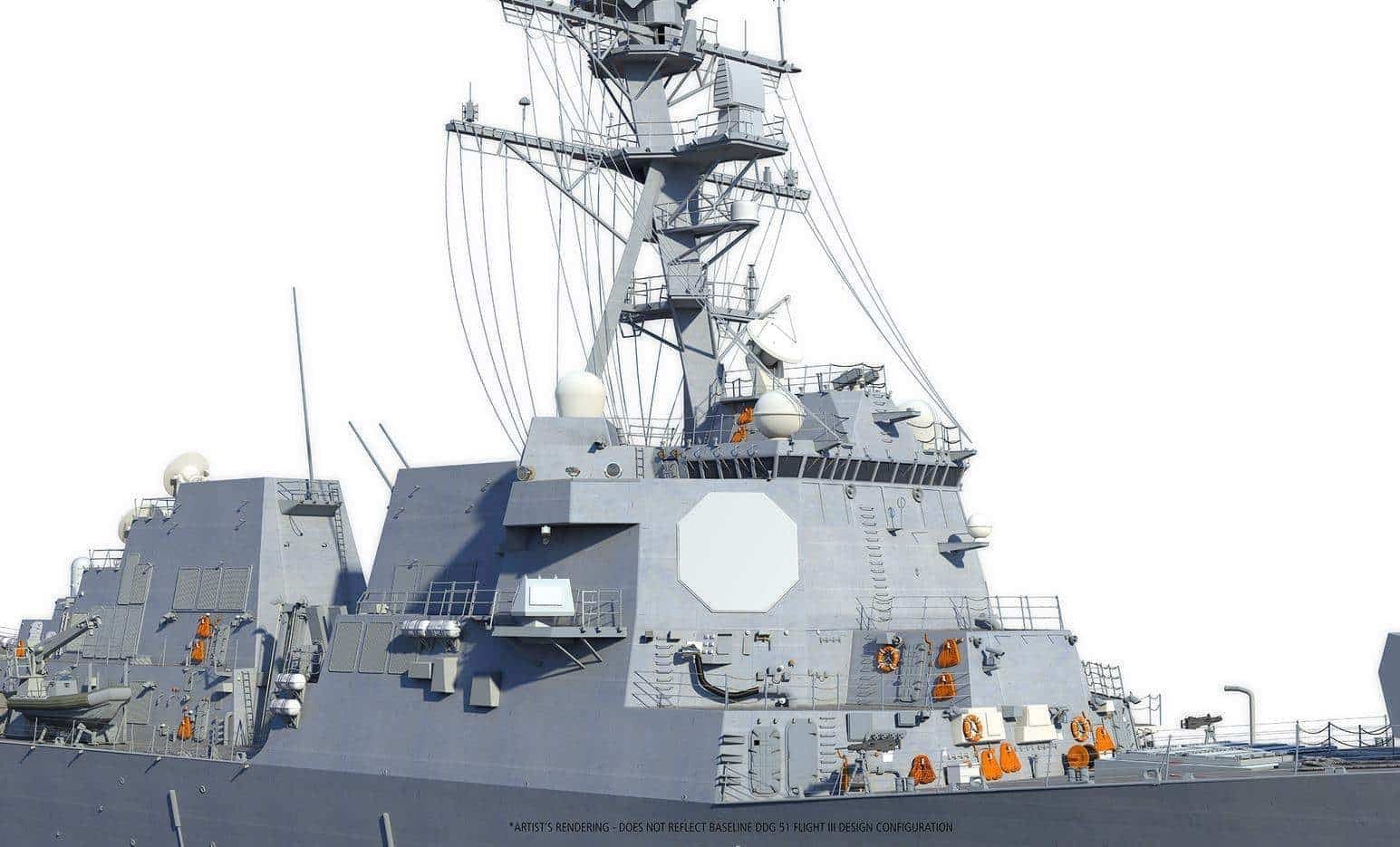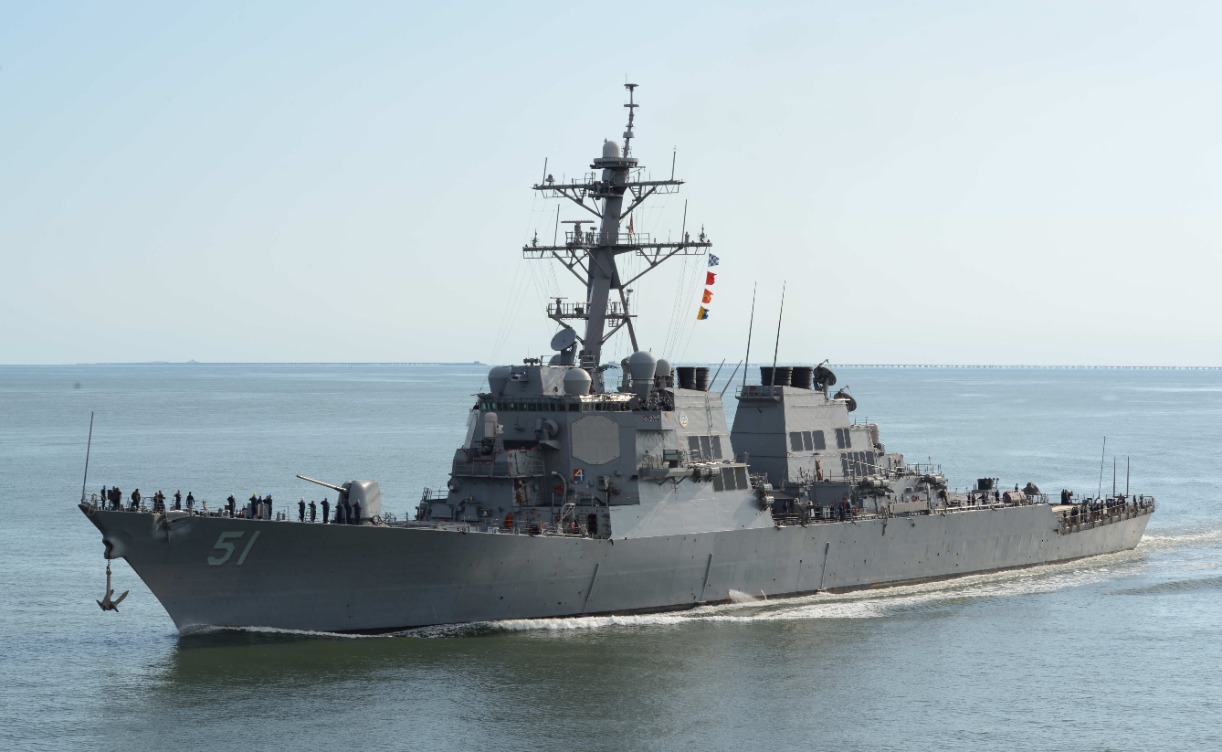Spy 6 Radar - The Navy's newest, most advanced warships will soon have one thing in common - the SPY-6 radar's ability to track small, fast objects at long ranges gives the ship more time to react to incoming threats.
The challenge for the Department of Defense for distributed operations is to address the fact that legacy systems are not built with the modularity, scalability, and connectivity to respond to new and evolving threats from close allies and partner competitors.
Spy 6 Radar

However, for one major reason, it will be less of a challenge for the US Navy's newest and most advanced weapons systems - the Erbil Burke-class Fleet III destroyers, the Enhanced Flight IIA destroyers, the under-development Constellation Class guided missiles. . Frigate, and Gerald R. Ford-class nuclear-powered aircraft carriers.
Raytheon Wins Spy 6 Radar Contract Worth Up To $3.2 Billion
This is because all these warships will be equipped with AN/SPY-6(V) S-band radar manufactured by Raytheon Missiles & Defense (RMD).
SPY-6 has capabilities that are directly applicable to major power competition and new concepts of operations such as Joint All-Domain Command and Control (JADC2) and the Navy's Distributed Maritime Operations (DMO). It can simultaneously defend against ballistic missiles, cruise missiles, hypersonics, enemy aircraft and surface ships, while offering many of the advantages of legacy radars, such as greater detection range, increased sensitivity and more accurate discrimination. .
"Getting this fleet on board as soon as possible is critical because SPY-6 is a game changer as it relates to superpower competition and new, advanced threats coming down the pike," said Scott Spence, the Navy's Chief Radar Officer. Navy Mission Area in RMD.
The ability of the SPY-6 family of radars to address today's new threats is due to its modular and scalable hardware and its software-defined beacons.
Distributed Advance Radar System Tested Successfully
In terms of hardware, the SPY-6 produces more radar power and has a more sensitive receiver than previous generation radars. This translates to significantly improved sensitivity for tracking objects at greater distances.
"What the SPY-6 gives you is the ability to operate what we call air and missile defense that can simultaneously track both air-breathing targets, whether cruise missiles or air-breathing threats, and Ballistic Missiles for Ships." Spence said. "Radar's greater sensitivity and versatility provide the Navy with situational awareness in its area of responsibility, a critical capability for distributed naval operations."
Spence also noted that RMD is working with the Office of Naval Research to transmit SPY-6-generated radar data between ships and to share radar power between individual ships in support of the DMO.

On the software side, the four SPY-6 radar variants (more on that below) all operate from the same software baseline and backbone. "With this software-defined aperture, as we call it, we can add capabilities through software updates as the threat evolves," Spence said. 6. Determinate Threats in Radar The Navy will continue to be able to add capabilities and functionality to radar in the coming decades.
Raytheon Awarded $781m Modification On Navy Ship Radar Integration, Production Contract
Since its founding, Raytheon has invested more than $600 million in the development and production of the SPY-6 family of radars, in addition to an investment of nearly $1 billion from the United States Navy. Compared to legacy radars, SPY-6 brings new capabilities to the surface fleet, such as electronic warfare protection and enhanced detection capabilities.
The SPY-6 radar type consists of 9 to 37 radar modular assemblies known as RMAs. Each RMA is a two-foot-by-two-foot-by-two-foot block, which is a functional radar with all the components necessary to perform the radar's mission.
"Common RMAs allow the SPY-6 to be scalable and modular to support production in all variants for the United States and partner nations," said Spence. "Thumbs are a feature of the program and we also scale the back end of the radars. All processing power, cooling and power systems are scaled proportionally."
The measurements of the SPY-6 family obviously refer to size, but more important to the fighter is the measurement in terms of strength.
U.s. Navy's Air And Defense Radar On Track, Meets Performance Requirements
"By measuring size you measure sensitivity and strength," says Spence. "You measure the limits of detection, how far you can see an object, how small an object you can see, and how many objects you can see at one time. Trying to find it.
The SPY-6 radar type consists of 9 to 37 radar modular assemblies, which function within the radar itself.
Installation, delivery and commissioning of SPY-6 is progressing rapidly. Installation of the SPY-6(V)1 radar was recently completed aboard the Navy's first Flight III destroyer USS Jack H. Lucas (DDG 125), scheduled for commissioning in 2024.

The destroyer was commissioned in March at the Huntington Shipyard and named for Navy SEAL Jacqueline "Jack" H. Lucas, the youngest recipient of the Medal of Honor in World War II at age 17. was a servant. Its Raytheon radar is now undergoing integration and combat management system testing with ships and navies. Testing of the full-power radar will begin later this year during manufacturing trials, which will include demonstrations in port and at sea used to evaluate the ship's systems and their readiness for delivery.
U.s. Navy Awards Raytheon $402 Million Contract For Spy 6 Radars
"This program is hitting its milestones," Spence said. The mantra of the Navy is to keep Jack on track. Getting the Flight III ship, the lead ship of the class, on time is crucial – it will install more SPY-6 radar for the other Flight IIIs to follow. "
The Flight III base for the Early Burke class was built specifically around the SPY-6 radar capabilities. "DDG 51 Flight III's upgrade centers on the AN/SPY-6(V)1 Air and Missile Defense Radar (AMDR) system, which provides enhanced IIA flight capabilities," says the Navy. AMDR Flight III Enables ships to conduct AAW [anti-air warfare] and BMD [ballistic missile defense] simultaneously, meeting the Navy's critical need for advanced surface combat integrated air and missile defense.
Delivery of the SPY-6(V)1 radar array was also completed for the next ship in the class, the upcoming USS Ted Stevens (DDG 128). The company typically delivers one 37-RMA SPY-6(V)1 radar array per month.
In related news, the company has begun delivery of three SPY-6 radars to the United States. John F. Kennedy (CVN 79) was the first aircraft carrier to adopt radar. Together, the three fixed face radars will form the SPY-6(V)3 EASR, providing 360-degree coverage for the ship. In addition to the multi-mission capabilities of the SPY-6 family, the SPY-6(V)3 has unique features that meet the aircraft carrier's needs, including weather mapping and air traffic control functionality.
Imagens Mostram Novo Radar De Defesa Aérea E De Mísseis Spy 6 Instalado Em Destróier Dos Eua
And earlier this year, the Navy awarded RMD a five-year, $3.2 billion, $651 million hardware manufacturing and sustainment contract to equip 31 ships with fixed-facing and rotating AN/SPY-6(V) radars. handle The contract includes the installation of seven ship types including Air Burke Class Fleet III destroyers, aircraft carriers and amphibious ships as well as the backfitting of Flight IIA destroyers.
Equipping existing Flight IIA destroyers with the SPY-6 will be a key part of the ship's mid-life modernization and enable defense against advanced threats such as ballistic or hypersonic missiles.
Installation of the SPY-6(V)1 radar was recently completed aboard the Navy's First Flight III destroyer USS Jack H. Lucas (DDG 125).

Raytheon's SPY-6 brings an entirely new capability to the radar fleet. It can track small and fast objects over great distances, giving warfighters more time to react to incoming threats to naval forces.
How Spy 6 Radar Is Enhancing The Navy's Next Destroyer
The modularity of the system allows the radar to scale its capabilities across various naval platforms operated by the US Navy and international partners. Add the software-defined nature of the radar and the SPY-6 family will be able to deter threats for years to come.
Raytheon's commitment to targeting targets in the missile and defense SPY-6 program, which keeps the Navy's shipbuilding program on schedule, has been tempered even by Covid and supply chain challenges.
"I can't say enough about what the task force has done over the last several years in partnership with the Navy to keep this program on track," Spence said. "We're delivering these capabilities ship-by-ship, so that every ship can go out on time with these capabilities." First Air and Missile Defense Radar (AMDR) AN/SPY-6 (SPY-) 6) array for installation on DDG-125, the last Airbrick-class destroyer, the first of four SPY-6 designs. It is a four-way, electronically phased array radar that supports multi-mission combat operations. The SPY-6 integrates with existing ship, combat and missile systems, providing defense against ballistic and cruise missiles, anti-surface and anti-aircraft threats and electronic warfare.
As a result of a collaborative effort with Raytheon and the Johns Hopkins Applied Physics Laboratory (APL), the US Navy recently delivered its first aircraft and missiles.
Cutting Edge Spy 6 Radar Ready For Future Uss Lucas Destroyer
Aegis spy radar, spy 4 radar, spy 1 radar, fox 6 weather radar, spy 6, spy radar, spy 2 radar, an spy 1 radar, spy 3 radar, an spy 3 radar, iphone 6 spy, spy 7 radar
0 Comments